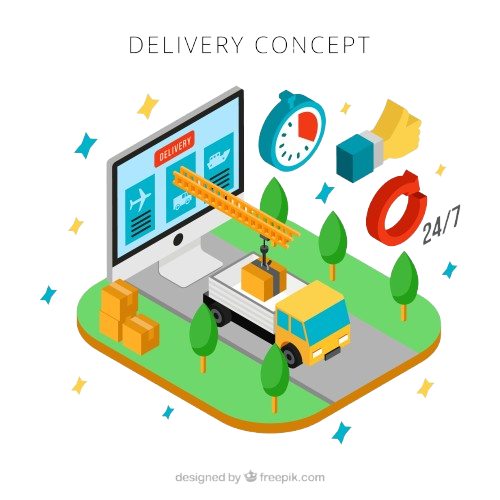
Introduction
Logistics and freight management are critical components of the global supply chain, ensuring the smooth movement of goods from suppliers to consumers. As businesses strive for greater efficiency, cost reduction, and improved customer satisfaction, the demand for advanced logistics and freight management software continues to rise. With the integration of cutting-edge technologies such as AI, IoT, blockchain, and cloud computing, logistics software solutions are revolutionizing the industry.
This guide explores the development process of logistics and freight management software, its key features, benefits, and future trends shaping the industry.
What is Logistics & Freight Management Software?
Logistics & Freight Management Software is a digital solution designed to streamline, automate, and optimize the movement of goods across supply chains. It enables businesses to manage transportation, inventory, warehouse operations, and freight dispatching efficiently. These software solutions provide real-time tracking, predictive analytics, and automation to enhance logistics operations.
Key Features of Logistics & Freight Management Software
1. Order & Shipment Management
- Integrates with order processing systems to track incoming shipments.
- Automates order tracking, invoicing, and documentation.
2. Route Optimization & Freight Scheduling
- AI-driven algorithms determine the most efficient routes.
- Dynamic scheduling assigns the best carriers and fleets based on availability.
3. Real-Time Tracking & Visibility
- GPS and IoT-based tracking systems provide live shipment updates.
- Customers and businesses can monitor freight movements to reduce delays.
4. Warehouse & Inventory Management
- Automates warehouse operations such as storage, order picking, and stock replenishment.
- Prevents stockouts and overstocking with real-time inventory updates.
5. Fleet & Carrier Management
- Manages driver assignments, vehicle maintenance, and fuel consumption.
- Enhances fleet efficiency with automated scheduling and reporting tools.
6. Automated Billing & Documentation
- Generates invoices, waybills, and compliance reports automatically.
- Ensures compliance with customs and transportation authorities.
7. Data Analytics & AI Integration
- Uses big data and machine learning to predict demand and improve efficiency.
- Provides insights to optimize logistics costs and improve decision-making.
How Logistics & Freight Management Software is Developed
1. Understanding Business Requirements
Before development begins, business needs, pain points, and objectives must be assessed. Developers work closely with logistics companies to understand specific challenges and operational workflows.
2. Designing the Software Architecture
Software architecture is designed based on requirements, considering factors like scalability, security, and integration capabilities with existing systems.
3. Selecting the Right Technologies
Developers choose the best technology stack based on project requirements. Common technologies include:
- Programming Languages: Python, Java, C++
- Databases: MySQL, PostgreSQL, MongoDB
- Cloud Platforms: AWS, Microsoft Azure, Google Cloud
- APIs & Integration: RESTful APIs for connecting with third-party logistics systems
4. Developing Core Functionalities
Key functionalities such as shipment tracking, route optimization, inventory management, and automated billing are developed and tested for performance and reliability.
5. Implementing Security Measures
Given the sensitive nature of logistics data, software must include robust encryption, user authentication, and data protection mechanisms.
6. Testing & Quality Assurance
The software undergoes rigorous testing, including unit testing, integration testing, and user acceptance testing (UAT) to ensure functionality, security, and performance.
7. Deployment & Integration
Once testing is complete, the software is deployed and integrated into the company’s existing logistics management system.
8. Ongoing Maintenance & Updates
Software requires continuous monitoring, updates, and support to ensure optimal performance and adaptability to industry changes.
Benefits of Logistics & Freight Management Software
- Enhanced Efficiency: Automates tasks to reduce manual effort and operational errors.
- Cost Reduction: Optimizes routes, fuel usage, and workforce allocation to save costs.
- Real-Time Visibility: Provides live tracking, predictive analytics, and automated reporting.
- Scalability: Easily adaptable to business expansion and increased demand.
- Improved Customer Satisfaction: Enhances delivery speed, accuracy, and communication.
- Regulatory Compliance: Ensures compliance with logistics and transportation regulations.
Future Trends in Logistics & Freight Management Software
1. Artificial Intelligence & Machine Learning
AI and ML are transforming logistics by enhancing demand forecasting, predictive maintenance, and autonomous decision-making. AI-driven chatbots and virtual assistants are also improving customer support.
2. Blockchain for Secure Transactions
Blockchain technology is being integrated into logistics software to improve transparency, security, and traceability. It helps prevent fraud, ensures real-time verification of shipments, and simplifies documentation processes.
3. Internet of Things (IoT) for Smart Logistics
IoT-enabled sensors and GPS tracking devices provide real-time data on vehicle locations, temperature control for perishable goods, and vehicle conditions to optimize logistics operations.
4. Cloud Computing for Scalable Solutions
Cloud-based logistics solutions enable businesses to scale operations, improve data accessibility, and enhance collaboration across supply chains.
5. Autonomous Vehicles & Drones
The rise of self-driving trucks and delivery drones is expected to revolutionize freight transportation by reducing delivery time and operational costs.
6. Sustainability & Green Logistics
More companies are adopting eco-friendly logistics solutions, such as electric vehicles, alternative fuels, and AI-driven route optimization to reduce carbon footprints.
7. Augmented Reality (AR) & Virtual Reality (VR)
AR and VR are being used for warehouse management, employee training, and improved freight handling procedures.
Conclusion
Logistics & Freight Management Software is evolving rapidly, leveraging AI, IoT, blockchain, and cloud computing to optimize supply chains and enhance business efficiency. Companies investing in advanced logistics software gain a competitive edge through improved operational efficiency, cost savings, and enhanced customer experience.
As technology continues to advance, future trends such as autonomous vehicles, AI-driven analytics, and sustainable logistics solutions will shape the industry’s future. Businesses that embrace these innovations will be well-positioned to succeed in the dynamic world of logistics and freight management.
By investing in the right logistics software development solutions, companies can ensure seamless freight operations, real-time tracking, optimized deliveries, and superior customer satisfaction in an increasingly digital landscape.